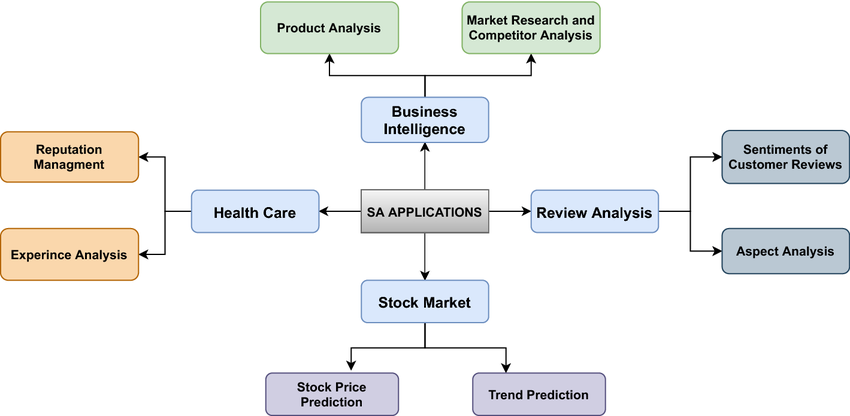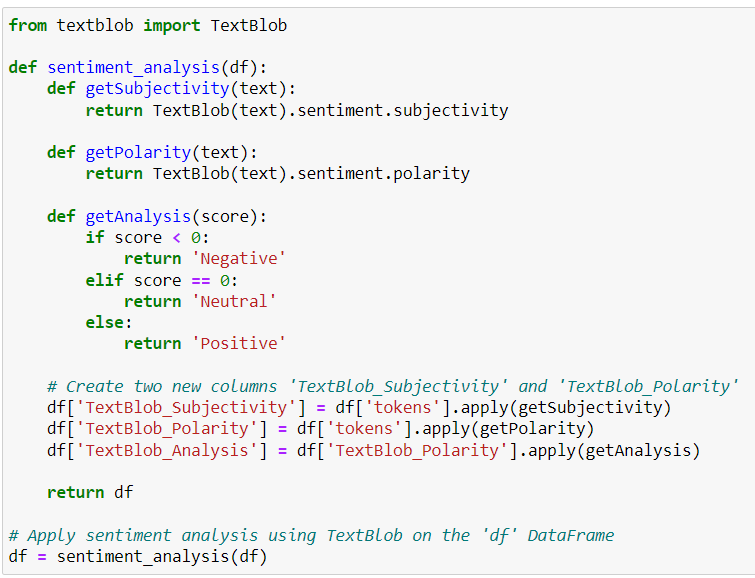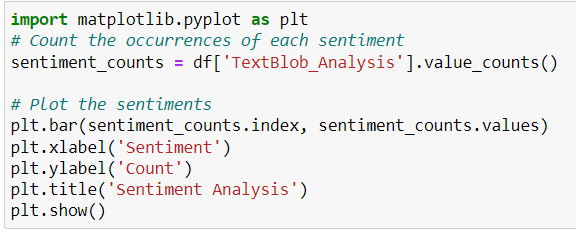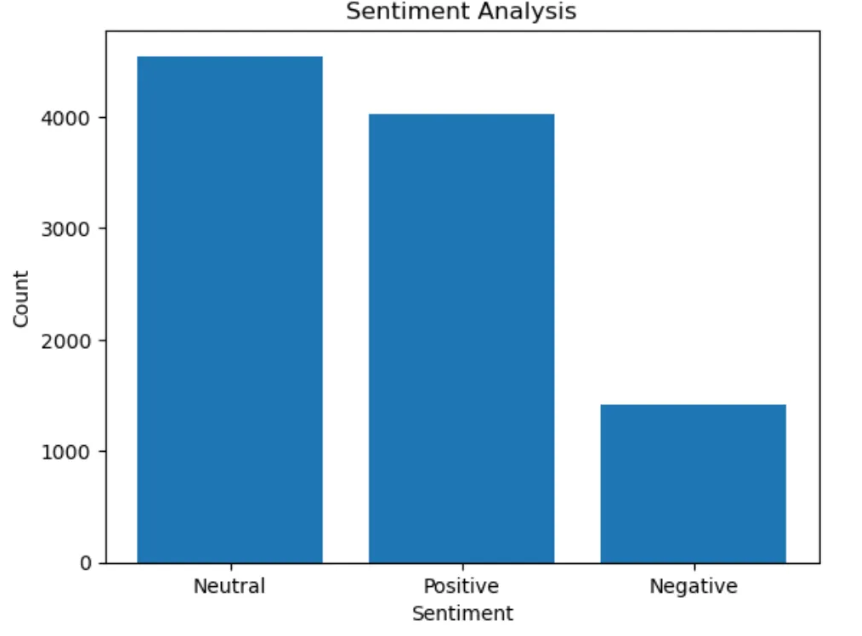

The versatile nature of sentiment analysis has led to its meteoric rise in popularity as a subfield of natural language processing (NLP). This article delves into the basics of sentiment analysis, how it helps us understand public opinion, how it’s used in many other sectors, and how to code it in Python. Researchers and companies may use sentiment analysis to learn how the public feels about certain goods, services, or societal concerns by deciphering the underlying emotional tone in text data. Sentiment analysis, which makes use of machine learning and natural language processing tools, improves decision-making and guides strategic activities according to public opinion and sentiment.
Computing the sentiment represented within text data is the goal of sentiment analysis, which is often called opinion mining. The analysis seeks to reveal the emotional tone communicated by the terms and expressions used in the text, which might be good, negative, or neutral. Suggestive language processing (NLP), computational linguistics, and machine learning are the building blocks of sentiment analysis algorithms, which efficiently sort text into various sentiment categories. Exploring the approaches used to extract emotion from text, the difficulties in effectively reading human feelings, and the several fields where sentiment analysis is used is essential in comprehending sentiment analysis.
By analyzing user-generated material posted on social media sites, businesses may get priceless knowledge about public sentiment and how consumers see their brands. Social media monitoring makes heavy use of sentiment assessment to keep tabs on mentions, discussions, and comments pertaining to services, goods, and brands. Companies may learn a lot about customer opinion of their brand, new trends, and how to handle customer complaints by examining the tone of these exchanges. Furthermore, sentiment analysis is useful for gauging the success of marketing initiatives and comprehending the dynamics of target consumers’ sentiment across various social media platforms.
Analysis of Customer Feedback: For companies looking to improve their goods or services, customer feedback is a gold mine of information. Review, survey, and customer service interaction sentiment analysis are vital for spotting client feedback trends and patterns. Companies may learn a lot about their customers’ wants and requirements, where they can make improvements, and how to resolve worries by sorting comments into good, negative, or neutral categories. Customer happiness and loyalty are nurtured via this feedback loop that iteratively improves.
Market Research: When doing market research, it is critical to have a firm grasp of customer sentiment to spot patterns, evaluate rivals, and make educated business choices. Market researchers may use sentiment analysis to sift through mountains of textual data, such as customer reviews, social media conversations, and forum posts, to draw conclusions about consumers’ tastes, habits, and inclinations. Market trends, new possibilities, and customer sentiment may be better anticipated and catered to by tracking patterns and changes in sentiment over time.

Figure: Applications of sentiment analysis
(Source: researchgate.net., 2022)
In order to glean useful insights from textual data, sentiment analysis makes use of a number of methods and algorithms. Here are a few typical methods:
The Bag-of-Words (BoW) method is based on the frequency of words rather than their order or syntax and is used to describe text data. In the resulting matrix, documents are represented by rows and unique terms in the corpus are represented by columns. Word frequencies in the linked documents are stored in each matrix cell. For sentiment analysis, particularly sentiment categorization and similar tasks, BoW’s simplicity belies its effectiveness.
One statistical metric that assesses a word’s significance in a document in comparison to a corpus is TF-IDF. It takes into account the word’s rarity throughout the entire corpus (opposite document frequency) in addition to its frequency in the document (term frequency). Important keywords for sentiment analysis may be found by looking for words with higher TF-IDF scores, which indicate that they are more significant.
These use a continuous vector space to create dense vector representations of words. By analyzing word use in context across a huge text corpus, these embeddings can capture the semantic links between words. Word embeddings frequently appear in sentiment analysis tasks due to their effectiveness in capturing words’ contextual meaning.
Considered among Python’s most well-known sentiment analysis techniques and packages are:
NLTK for short, is an extensive library for sentiment analysis and other natural language processing jobs. It is a flexible option for natural language processing (NLP) applications due to the tools and resources it gives for processing text, tokenizing it, tagging parts of speech, and doing sentiment analysis.
It is an NLP library that is constructed on top of the Pattern and NLTK libraries, however it is simpler. Common natural language processing (NLP) tasks, such as sentiment analysis, part-of-speech tagging, and noun phrase extraction, are made easy with its user-friendly interface. TextBlob makes it easier to begin sentiment analysis jobs by providing pre-trained models.
An acronym for “Valence Aware Dictionary as well as Sentiment Reasoner,” is a tool for assessing the sentiment in electronic writings using a vocabulary and a set of rules. It takes into account rules for dealing with punctuation, negation, emotion intensity, and a pre-built dictionary of words that have been scored with sentiment. When it comes to assessing tone in brief, casual texts like comments and posts on social media, VADER shines.
With these methods and resources, researchers and developers may quickly and easily do sentiment analysis jobs in Python, allowing them to glean useful insights from textual data.
The data link is extracted from Kaggle website. The link of the site is in the following-
https://www.kaggle.com/datasets/mt9899/twitter-data-for-movie-extraction-2

Three more columns are added to the database: ‘TextBlob_Subjectivity,’ ‘TextBlob_Polarity,’ and ‘TextBlob_Analysis.’ The sentiment is then classified as ‘Negative,’ ‘Neutral,’ or ‘Positive,’ depending on the polarity score. After that, the DataFrame is subjected to the sentiment analysis by means of the sentiment analysis function.

Here are the emotion counts that were uncovered by analyzing data scraped from Twitter for the Extraction 2 movie:
Indifferent: 4547
Good: 4029
Unfavorable: 1423
According to the data, a large portion of the tweets were agnostic, indicating either a measured viewpoint or comments devoid of emotion. Furthermore, a high number of positive feelings indicates that people had pleasant experiences and thoughts about the film.


Conversely, there is some criticism or discontent shown by the comparatively low quantity of negative feelings. It seems from the sentiment research that most Twitter users had a favorable impression of Extraction 2, with many individuals leaving positive comments. The fact that many Twitter users had great things to say about the film and just a few had bad things to say indicates that it was well-received.
Some of the ethical implications regarding sentiment analysis include worries about personal data privacy and the possibility of manipulative or discriminating employing of sentiment analysis findings. Some worry that sentiment analysis algorithms aren’t open and accountable enough and might hurt people or communities in ways nobody anticipated.
Ultimately, sentiment assessment is a strong instrument that has many uses in many different fields; it provides important information about public opinion, customer sentiment, and the emotional dynamics included in textual data. Improvements in artificial intelligence and natural language processing have allowed sentiment analysis to progress despite obstacles like data bias and ambiguous terminology. Responsible implementation and openness in sentiment analysis procedures are crucial in light of ethical issues, such as privacy concerns and possible abuse. Emotion recognition and multimodal evaluation are two new areas that show potential for expanding sentiment analysis’s uses and capabilities in the future, which could lead to better decisions and more creative solutions.